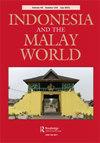印尼文学中老虎的多元生态
IF 0.9
3区 社会学
0 ASIAN STUDIES
引用次数: 0
摘要
摘要:本文以两部颇具影响力的小说《莫赫塔尔·鲁比斯的哈里毛!哈里茂!(1975)和Eka Kurniawan的Lelaki harimau(2004)。利用东南亚人类学研究中的“多元生态”概念,生态学被理解为人类和非人类之间的一系列关系,有人认为,莫赫塔尔·卢比斯的小说描绘了一个相互冲突的生态环境,在这个环境中,伊斯兰人文主义自然主义最终成为真正的生态。这部小说站在现代化和国家建设之后的祛魅传统中。但是,与社会和文学朝着祛魅发展的假设相反(彭杜尼安),最近的小说《Lelaki harimau》提供了一个多元生态的例子,在这个例子中,人类和非人类之间保持其他关系的可能性,就像小说中老虎作为一种灵魂出现在主人公的身体里一样。多元生态使对小说的不同解读成为可能,并表明万物有灵论仍然是理解社会现实的一个相关因素。本文章由计算机程序翻译,如有差异,请以英文原文为准。
Plural Ecologies of Tigers in Indonesian Literature
ABSTRACT This article explores the changing ecologies in Indonesian literature by drawing on the examples of tigers in two influential novels, namely Mochtar Lubis’ Harimau! Harimau! (1975) and Eka Kurniawan’s Lelaki harimau (2004). Using the concept of ‘plural ecologies’ from anthropological research in Southeast Asia, an ecology is understood as a set of relations between humans and non-humans, and it is argued that Mochtar Lubis’ novel depicts a setting of conflicting ecologies in which an Islamic-humanist naturalism eventually emerges as the true ecology. The novel stands in the tradition of disenchantment in the wake of modernisation and nation building. But contrary to the assumption that society – and literature – develops towards disenchantment (penduniaan), the more recent novel, Lelaki harimau, provides an example of a plural ecology in which the possibility of other relations between humans and non-humans is maintained, as in the novel the tiger emerges as a spirit which dwells in the body of the protagonist. The plural ecologies make different readings of the novel possible and demonstrate that animism is still a relevant factor for the understanding of social reality.
求助全文
通过发布文献求助,成功后即可免费获取论文全文。
去求助
来源期刊

Indonesia and the Malay World
ASIAN STUDIES-
CiteScore
2.00
自引率
0.00%
发文量
17
期刊介绍:
Indonesia and the Malay World is a peer-reviewed journal that is committed to the publication of scholarship in the arts and humanities on maritime Southeast Asia. It particularly focuses on the study of the languages, literatures, art, archaeology, history, religion, anthropology, performing arts, cinema and tourism of the region. In addition to welcoming individual articles, it also publishes special issues focusing on a particular theme or region. The journal is published three times a year, in March, July, and November.
 求助内容:
求助内容: 应助结果提醒方式:
应助结果提醒方式:


